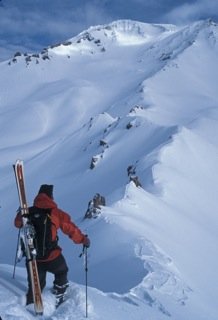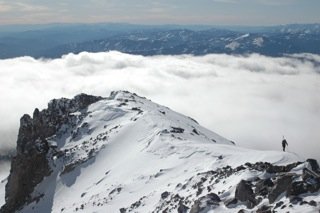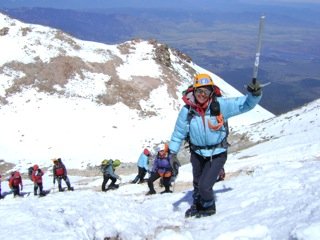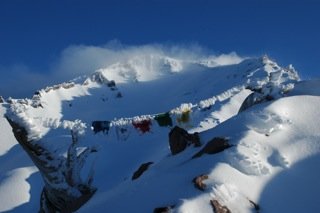When Is The Best Time To Climb Mt. Shasta?





This should be one of the first and is one of the most important questions. Proper conditions will greatly increase the enjoyment of the climb, as well as increase the likelihood of summit success on a giant Cascade volcano. We’ll answer the best we can with over 40 years living and recreating at the base with the understanding that it greatly depends on the current mountain snowpack and we’re certainly seeing swings in weather patterns that are difficult to predict.
Historically and statistically, April-September can have some of the most stable weather on California’s Mt. Shasta. Part of the Cascade mountain range and Pacific Ring of Fire, Mt. Shasta is a strato-volcano and on average receives over 500″ of snow per season. This snowpack is what creates optimal and saf(er) climbing conditions on the volcanoes. The snow provides an efficient and essential surface for climbing. As a Cascade peak, underneath all the snow lies an unstable rock and ice surface. Optimally we climb when the snow still covers these hazards and the weather mostly stable. With proper timing we will climb when the snow is frozen in the wee hours of the night and early morning. Then typically, by 10:00 or 11:00 the surface has softened and makes for a smooth and soft descent with potential for one of the longest glissades on the planet!
Ultimately, we want to climb Mt. Shasta when there is adequate snow coverage and a reasonable chance for high pressure and good weather. The current winter snowpack depths and weather patterns will ultimately determine when that is. The exception is the Clear Creek route which is often climbed late summer and snow free. Unlike peaks to the south in the Sierra Nevada Range, we need the snow depth for safe and efficient travel, to wait for the snow to melt is a potentially dangerous solution and certainly a tedious challenge of uphill scrambling on loose, steep, rocks. We at SMG choose climbing routes in optimal condition and utilize several trailheads and aspects as conditions change throughout the year. We are on the mountain daily scrutinizing route conditions as they quickly change.
We recommend and regularly schedule summit climbs from April-September. A climb outside of this timeframe is certainly possible but summit success and possibilities often plummet outside of this window. In 40+ years of guiding on Mt. Shasta, we’ve found the best summit success in the spring and summer months.
April and May are generally considered early season and can have fantastic alpine conditions. We feel this is the best timing for true alpine climbing and ski mountaineering with all of the routes having excellent conditions. Access is limited with the Everett Highway sporadically plowed in the winter months. There may still be concerns of avalanche hazard in Avalanche Gulch, especially if we receive new snowfall, but the ridges are prime now. You will be on snow the entire trip, from the trailhead to the top. Weather tends to be a bit colder and the wind a bit stronger as compared to later in the season. The advantage is the scenery is absolutely stunning and there are far fewer climbers on the mountain. Our experience is that there is a 70-80% chance of climbable weather in May, and 70% in April.
June and July are peak months on the mountain. This is typically the best stable weather and adequate snowpack combination. Avalanche Gulch and the West Face are both in prime climbing condition in June and the north side Hotlum-Bolam and Hotlum Glaciers in July. at this time. In a big winter we may receive enough snow to allow climbing on the south side routes through July. In drought years, earlier is better. This is also the most impacted season, but anything is still possible; we’ve had extended high pressure in January and we have skied fresh powder in June and had snowstorms in July that dropped over 4 feet!
August and September can have excellent and stable weather on the mountain. The North side glacier climbs are still ideal in August and Clear Creek is in prime summer condition. August can be hot, but on the north side, it’s cooler and the glaciers in prime shape. We may see afternoon thunderstorms, but they are usually late on Mt. Shasta and infrequent. Avalanche Gulch is typically done at this point, but the Hotlum and Bolam Glaciers are perfect! The snow level and temps may be creeping up on the south side routes and these may be too melted to allow safe climbing with serious rock fall a real hazard. As we get deeper into September, the days are short, temps a bit cooler, and the chance for snow is not uncommon. The route conditions will deteriorate and we’re usually finishing up by early September.
Fall and Winter A climb is always possible however Fall often has very poor climbing conditions due to melted snow and poor conditions on the glaciers. For those intent on an off-season climb, the Clear Creek route is a good choice. If one is resolved to experience whatever the mountain chooses to dish out, a winter expedition is a wonderful experience. Statistically, it is also the least likely time to be able to reach the summit. Severe, unpredictable weather and winds, extreme temps, deep, unconsolidated snow all make for a challenging winter ascent. This is the time to bring the backcountry skis and boards, Mt. Shasta is legendary for off-piste recreation.
We’ve had summer conditions in a January summit and fierce winter storms with powder skiing in July. One thing is for certain, there are few sites that equal the rugged beauty of Mt. Shasta in a storm; the clouds reveal a fresh landscape that will leave you breathless. Be prepared for all types of weather and temperatures, any time of year. Check the current weather and do not trust any forecast more than 2 days in advance, storms move quickly and can create whiteout conditions.
